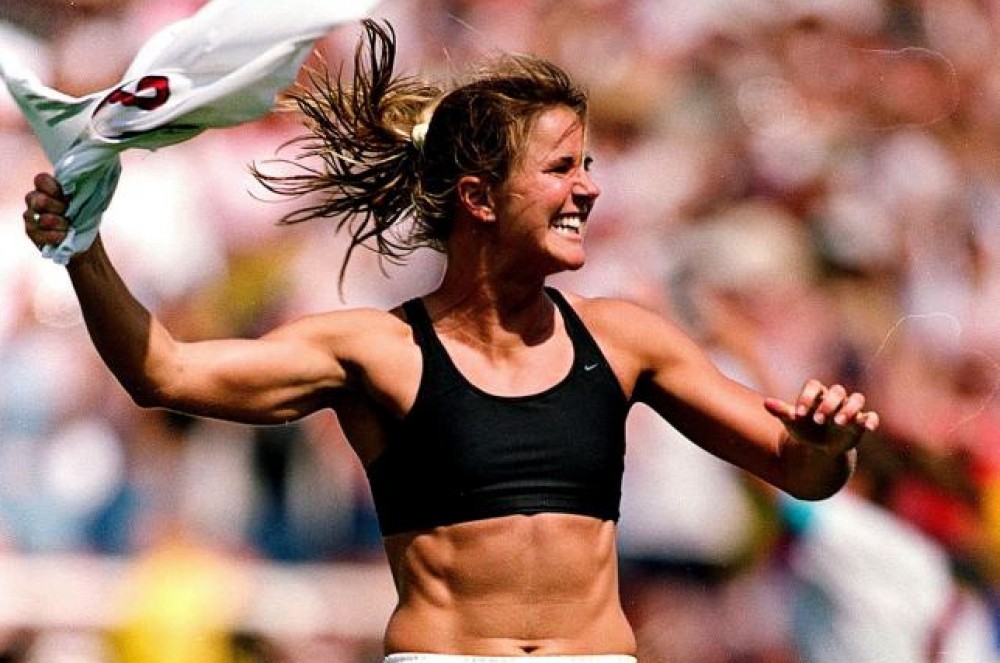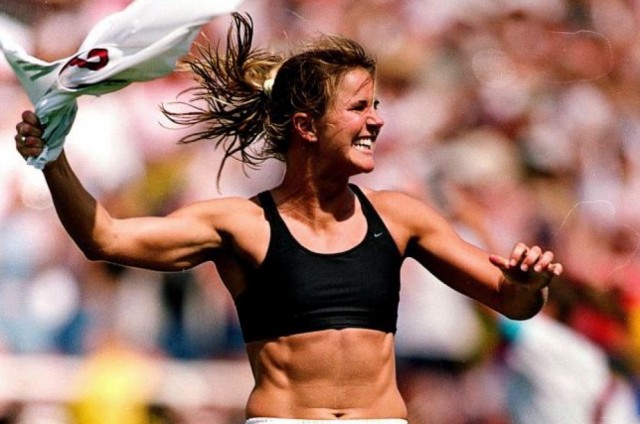“Nipples on a C or D-cup can accelerate up to 45 mph in one second, faster than a Ferrari”


At ESPN Magazine, Amanda Hess takes on “the place of the mammary in the pectoral-dominated world of sports,” beginning a few months ago with the first women’s fight in UFC history, in which #1-ranked MMA fighter Ronda Rousey was given the wrong bra for her match and subsequently had to deal with both a neck-snapping choke hold and a breast about to expose itself to a lifetime of GIF immortality. Hess then gets into facts that boggle the mind:
Greek folktales spun the myth that a race of all-female Amazons lopped off the right breast in order to hurl spears and shoot arrows more efficiently. (In Greek, a-mazos means “without breast.”)
Research shows a typical A-cup boob weighs in at 0.43 of a pound. Every additional cup size adds another 0.44 of a pound. That means a hurdler with a double-D chest carries more than 4 pounds of additional weight with her on every leap. And when they get moving, the nipples on a C- or D-cup breast can accelerate up to 45 mph in one second — faster than a Ferrari. In an hour of moderate jogging, a pair of breasts will bounce several thousand times.
The piece, a fascinating counterpoint to the diverse array of photos in the ESPN Body Issue, covers female athletes’ extensive strategies (from different golf postures to $15,000 breast reductions) to deal with their boobs as well as the diminishment of opportunities that come with increases in chest size (“Busty ballet dancers are transferred to hip-hop. Postpubescent gymnasts get put on the rings. Runners are instructed to play in the water instead”). Also, a bit about the sports bra:
When Katherine Switzer became the first woman to don a bib at the Boston Marathon in 1967, science was unprepared to grapple with the female frame in motion. Critics warned her that the repetitive movement could cause her breasts to atrophy and her uterus to drop out of her vagina. (She ran the race in a flimsy fashion bra under a T-shirt and sweatshirt.) The sports bra wasn’t even invented until 10 years later, when a group of women sewed two jock straps together and slung them over their shoulders. (An early version of the original Jogbra is now preserved behind glass at the Smithsonian.) The advent of the sports bra “was like the birth control of the women’s sports revolution,” Switzer says. Still, for the next 10-plus years, scientists stayed out of athletes’ efforts to make their breasts stay put. Finally, in 1990, Oregon State University researcher LaJean Lawson invited female subjects onto a treadmill and filmed the results in the first-ever study of breast movement.
As I grew up, I was shifted from ballet to gymnastics to cheerleading in response to even the barest developments in my always average-small frame; I was saved from an oppositional relationship to my chest by the fact that I was not actually good at any of these things. Mad respect for the female athletes who deal with simultaneous ogling and wrangling on the daily.